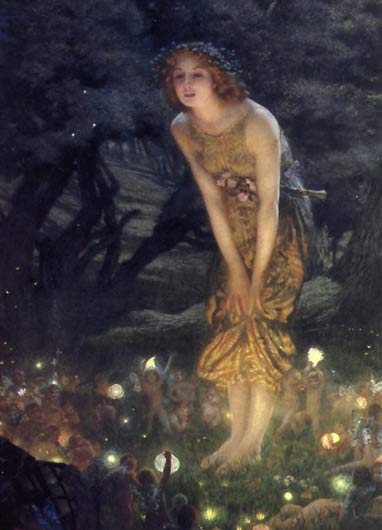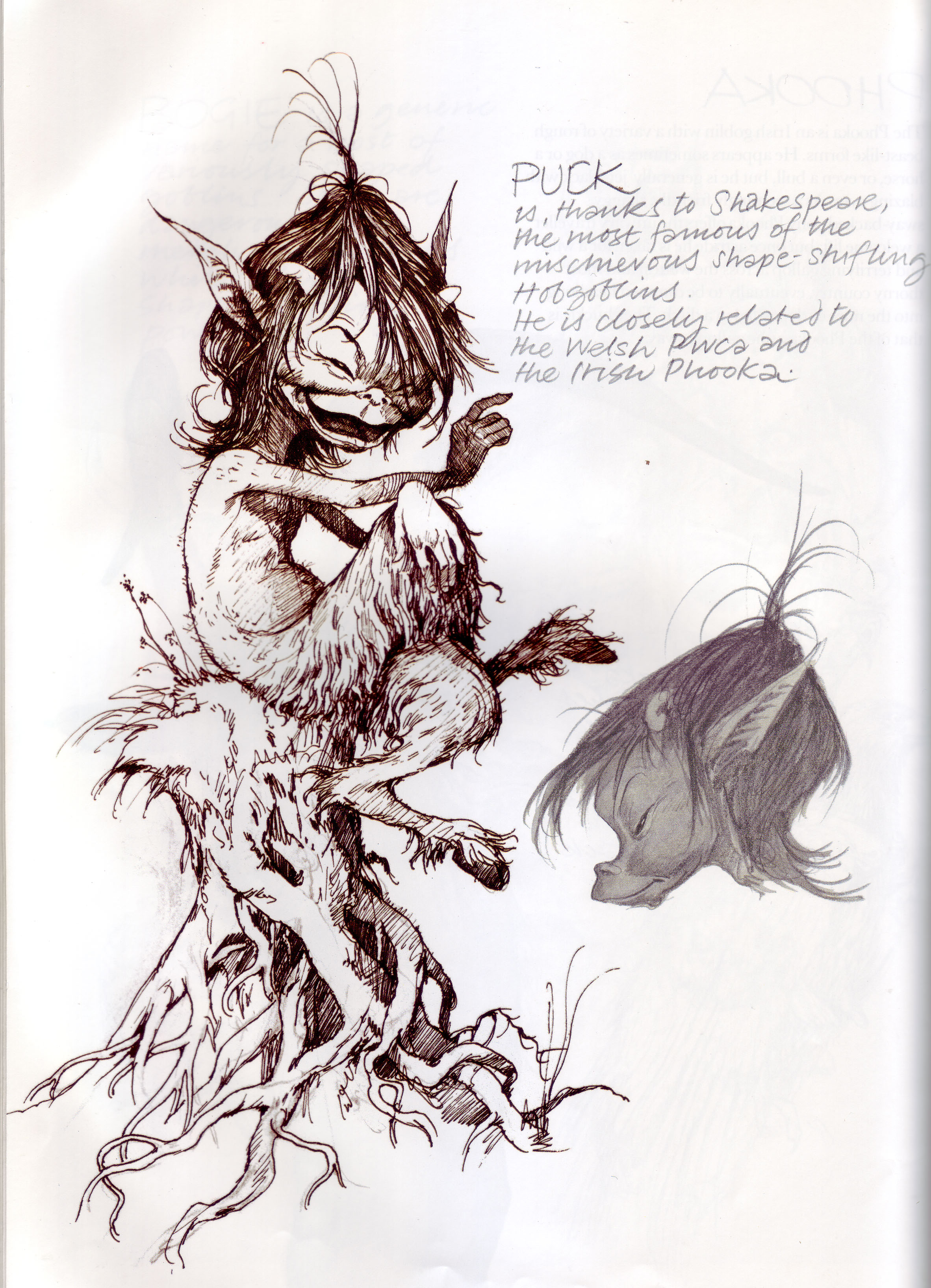Faeries have long been associated with Summer and the seasons, finding a myriad of ways to cause mischief. Midsummer marks long hot days and short nights for merry-making. Faeries fertilize summer crop that will surely become winter bounty and they beckon men into the forest. Deep in the wood on warm summer nights the faeries are known to feast and dance, when observed by mortals their peculiar toils become alluring and glamorized. Dazzled by lights and eloquent music the observer inches closer, celebrating curious thoughts, a moth drawn to a flame. The mortal slips into a faerie-ring falling for silent whispers with drunken promises of pleasure and riches incomprehensible.
 | |||||
'Midsummer Eve'
|
English and Celtic folklore often highlight faerie mischief. It is not uncommon for a protagonist to discover that his pockets, which at one point during the night were filled deep with golden coins, have now only dried oak leaves and twigs. Faerie-rings are traditionally found in a circular formation of toadstools. The superstitions of old warn of particular places in which someone is sure to discover this anomaly. Old oak trees and old willows warn forest wanders that faeries are near, for it is the faeries who Shepard the trees and forest life and surely where the ancient trees are you are sure to find ancient mischief. E.R. Hughes famous painting 'Midsummer Eve' is fascinating because at first glance it is enchanting. When viewing the painting we are first captivated by the delight of the maiden and then the beautifully illuminated little folk. What most viewers of the painting do not recognize is the danger that the maiden is in, for the longer she stays within the circle the closer she is to death.
The faerie-ring is a cautionary tale explored by many countries and legends, it is one warning mortals about the power of the Faerie Realm. For those who step within are sure to never return and those who are able to escape are scared by various forms of daemon mischief. In Washington Irving's 1819 tale Rip Van Winkle, a man wanders deep into the woods, into a hollow seeking alien thunderous sounds. Once in the hollow he finds himself amidst many bearded merry makers who usher him into a night of games and moonshine. After a night of drunken folly Rip Van Winkle awakes to discover a long train of white hair where his chin used to be. Haunted and hungover he wanders back to his town and discovers that his wife has died and his friends are gone, victims to time of the Revolutionary War. After much terror he learns he has lost nearly two decades of time.
If you see a fairy ring
Near a field of grass,
Very lightly step around,
Tiptoe as you pass;
Last night fairies frolicked there,
And they're sleeping somewhere near.
If you see a tiny fae
Lying fast asleep,
Shut your eyes and run away,
Do not stay or peep;
And be sure you never tell,
Or you'll break a fairy spell.
---William Shakespeare
 |
| 'Fair Helena' A Midsummer Nights Dream, Arthur Rackham, 1908 |
As the summer draws out long between St. John's Eve & the first dry falling leaves remember to take caution when wandering through the woods. Legend tells us to heed the tales of old. Do not fall prey for whimsical chimes as the wind whispers enchantments, remember that it is the time for faerie feasts. And as the lights of Faerie-Feasting can appear enticing they move and manipulate time in a realm wholly different than our own.
 |
| Faeries, Brian Froud & Alan Lee, 1978 |
"Travelers were tickled to death by the fairy, who bedeviled their sides with twigs and teased their faces with forest grasses until they shrieked with laughter and gasped their last. Those who hoped to thrive in the forest were well advised to mollify the fairy lords with offerings."
---The Enchanted World, Fairies & Elves, by the editors of Time-Life Books

No comments:
Post a Comment